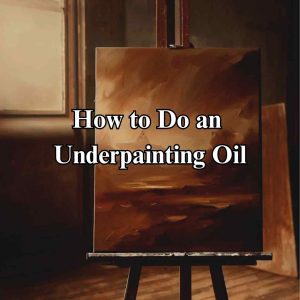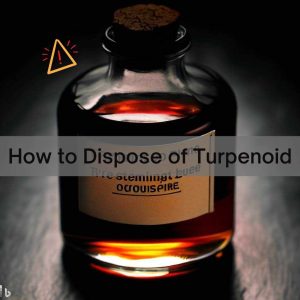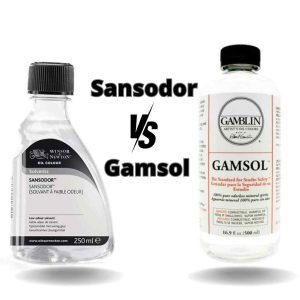Are you an artist seeking the perfect solvent for your creative endeavors? Look no further than the turpenoid vs mineral spirits debate.
As you dive into the world of painting, understanding the characteristics and applications of different solvents becomes essential.
Turpenoid and Mineral Spirits are two popular options that artists often contemplate, each with its own unique properties and advantages.
In this article, we will unravel the mysteries of these solvents.
So, join us on this artistic journey as we guide the world of solvents and help you choose the perfect companion for your creative pursuits.
Turpenoid vs Mineral Spirits: Quick Comparison Chart
Here’s a comparison table outlining the differences between Turpenoid and Mineral Spirits for your ease of access:
| Property | Turpenoid | Mineral Spirits |
| Composition | Derived from citrus oils or pine trees | Refined petroleum distillate |
| Odor | Mild, pleasant citrus or pine scent | Strong, pungent solvent odor |
| Toxicity | Low toxicity | Moderate to high toxicity |
| Flammability &Evaporation Rate | Highly flammable & Medium | Highly flammable & Medium |
| Drying Time | Slower drying time compared to mineral spirits | Faster drying time |
| Solvent Power | Good solvent power for oil-based paints | Excellent solvent power for oil-based paints |
| Thinning Capability | Effective for thinning oil paints and varnishes | Effective for thinning oil paints and varnishes |
| Cleaning | Can be used to clean brushes and other tools | Can be used to clean brushes and other tools |
| Environmental Impact | Biodegradable and non-toxic options available | Petroleum-based, may have environmental impact |
Turpenoid and Mineral Spirits: Composition and Characteristics
A. Turpenoid
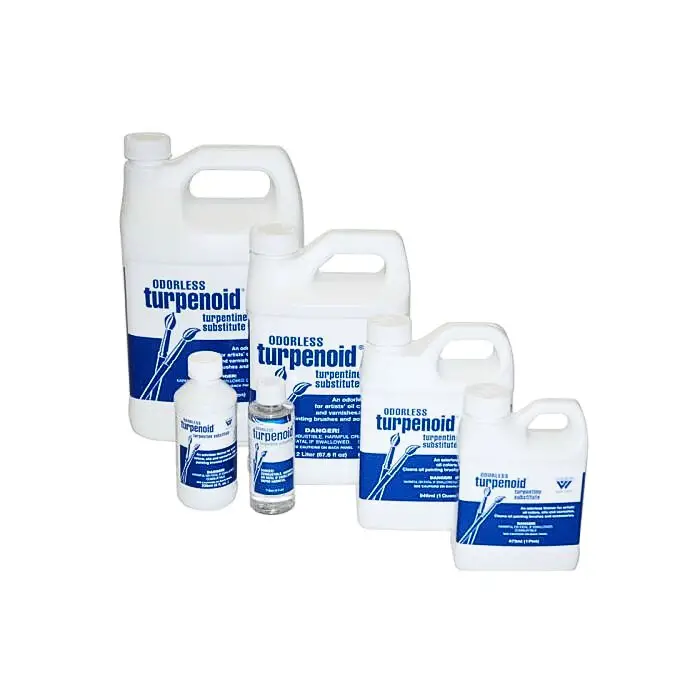
Turpenoid consists of a carefully formulated blend of solvents, often including petroleum distillates and proprietary ingredients. Its unique composition offers excellent solvency power while minimizing the harmful effects associated with traditional turpentine.
Turpenoid has a moderate evaporation rate and is known for being relatively odorless, making it a preferred choice for artists who are sensitive to strong odors.
Additionally, it takes environmental considerations into account by offering eco-friendly options.
B. Mineral Spirits
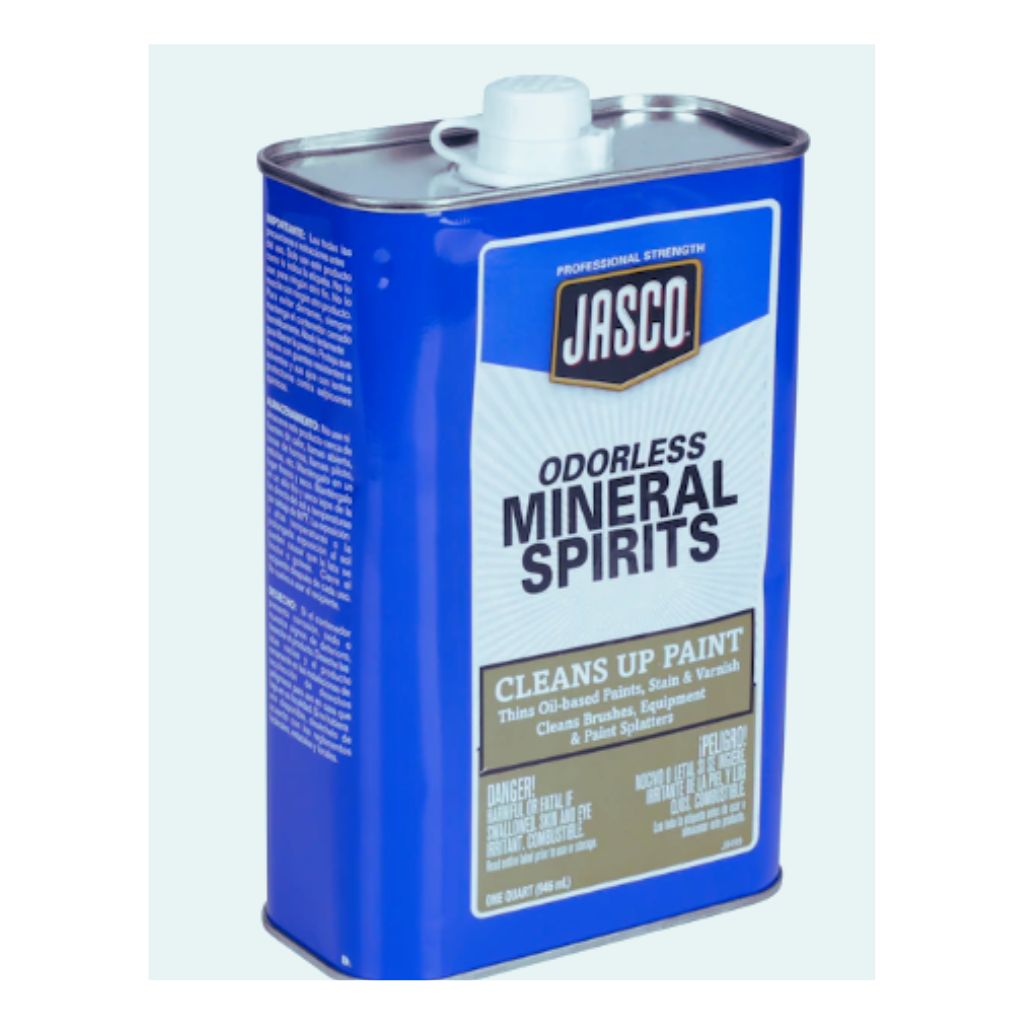
Mineral Spirits, a petroleum-based solvent, is primarily composed of aliphatic hydrocarbons. It is a highly effective solvent with a faster evaporation rate than Turpenoid.
However, it is important to note that Mineral Spirits typically have a stronger odor compared to Turpenoid. When using Mineral Spirits, proper ventilation is crucial to ensure a safe working environment.
It is also important to consider the environmental impact of Mineral Spirits and explore alternative options that are more eco-conscious.
Turpenoid vs Mineral Spirits: Uses in Art
Both Turpenoid and Mineral Spirits offer various uses in the world of art. Consider your specific artistic needs and techniques when choosing between these solvents, as their distinct properties can greatly enhance your creative practice.
A. Turpenoid
Cleaning brushes and tools

Turpenoid is an excellent solvent for cleaning brushes and tools used in oil-based painting. Its solvency power effectively removes paint residue from bristles, ensuring that your brushes remain in optimal condition for future use.
By thoroughly cleaning your brushes with Turpenoid after each painting session, you can maintain longevity and prevent color contamination between different paint colors.
Thinning oil-based paints
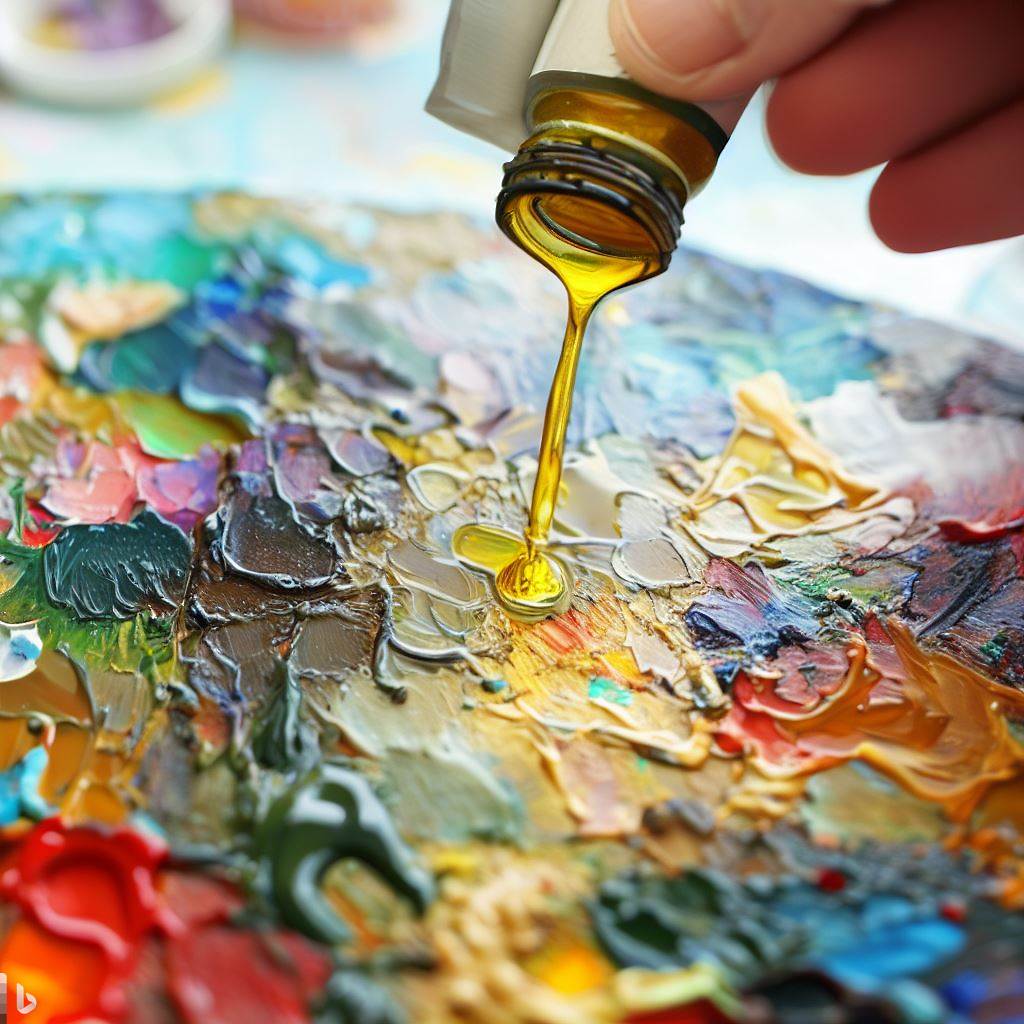
When working with oil-based paints, artists often need to adjust the viscosity or thickness of the paint to achieve desired effects. Turpenoid serves as a reliable medium for thinning oil-based paints, allowing you to create transparent washes, smooth glazes, or achieve subtle gradations.
By adding small amounts of Turpenoid to your paint, you can control the consistency and flow, enabling greater control over your brushwork and paint application.
Mixing with mediums
Turpenoid can also be used as a mixing agent with various mediums in oil painting.
When combined with oil painting mediums like linseed oil or stand oil, Turpenoid helps enhance the flow and workability of the paint. It facilitates the blending of colors, extends the drying time, and adds a glossy finish to your artwork.
By experimenting with different ratios of Turpenoid and mediums, artists can achieve a wide range of textural effects and surface finishes.
B. Mineral Spirits
Cleaning brushes and tools
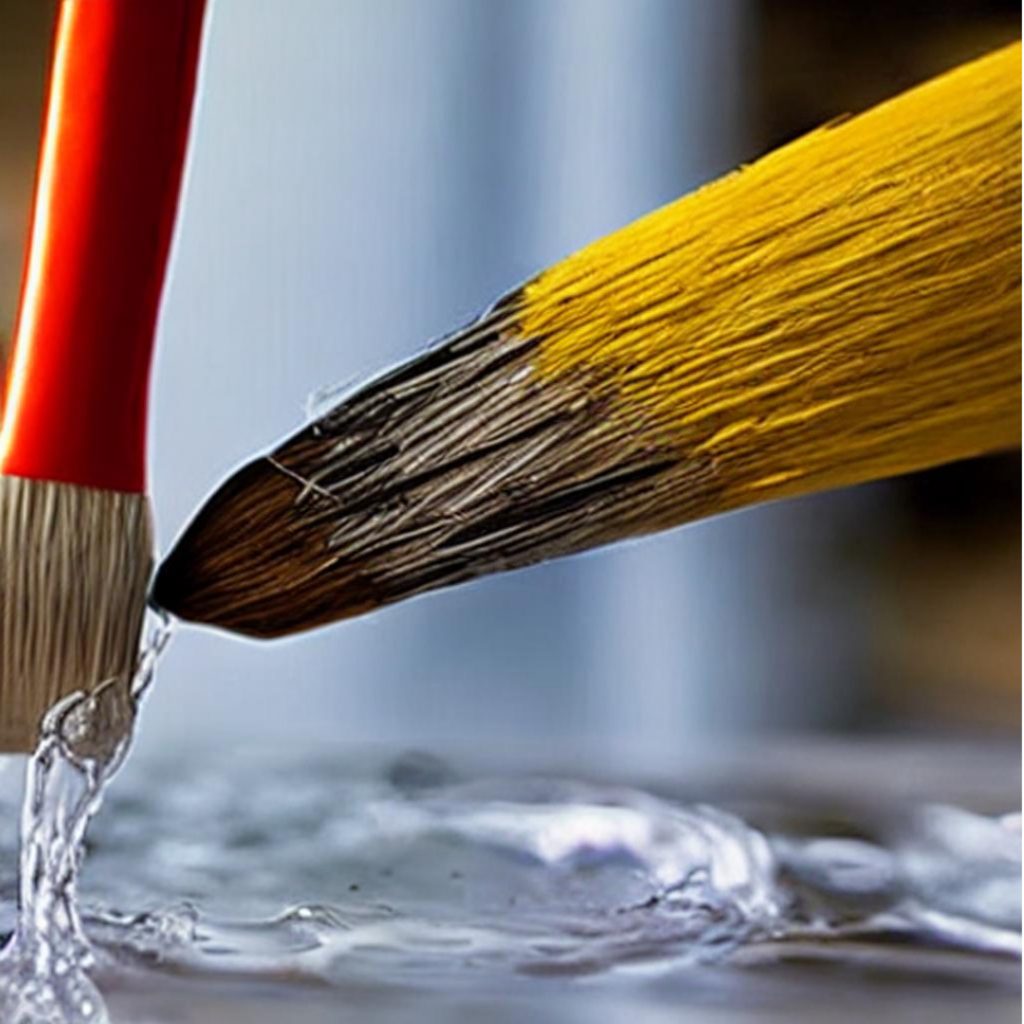
Similar to Turpenoid, Mineral Spirits is highly effective in cleaning brushes and tools used with oil-based paints. Its strong solvency power effortlessly removes paint residues, ensuring that your brushes remain in optimal condition for future use.
Whether you’re working with stiff bristle brushes or delicate sable brushes, Mineral Spirits can effectively dissolve oil-based paints, allowing you to restore your brushes to their original state.
Diluting varnishes and stains
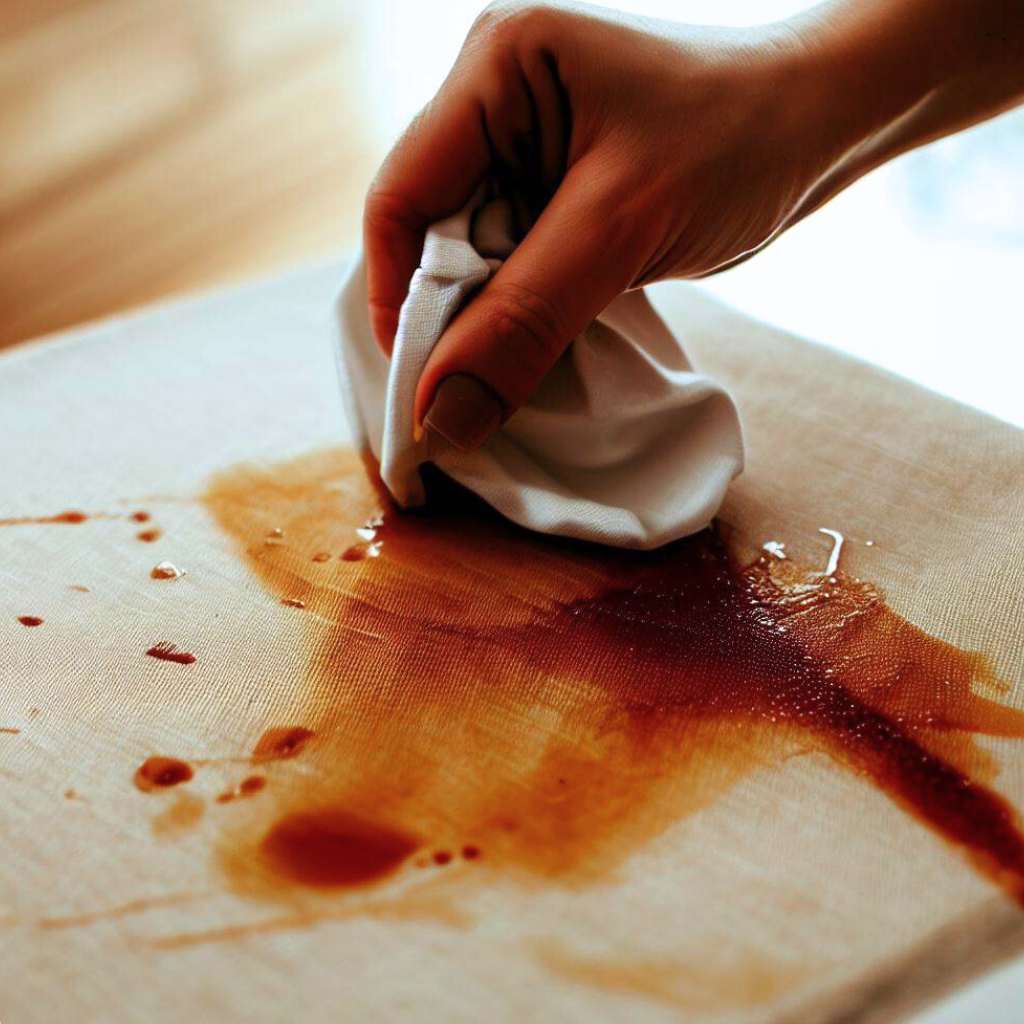
Mineral Spirits are a valuable solvent for artists working with varnishes and stains. When applying varnish or stain to a painting or wooden surface, Mineral Spirits can be used to dilute the solution to the desired consistency.
This enables artists to achieve even and smooth applications, enhancing the final appearance of the artwork or woodwork. By diluting varnishes and stains with Mineral Spirits, you can achieve better control over the opacity and coverage, ensuring a professional finish.
Removing wax and grease
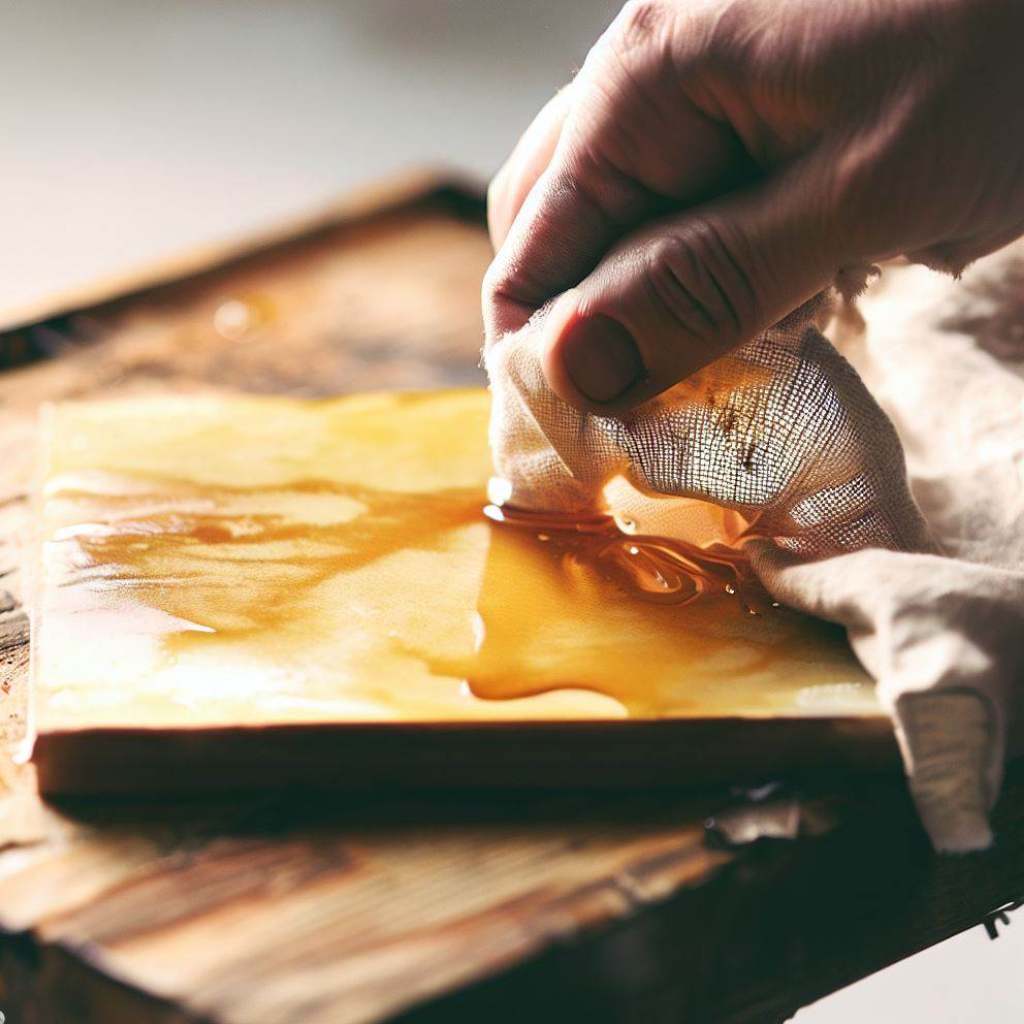
Mineral Spirits’ powerful solvency makes it an effective tool for removing wax and grease from art surfaces.
Whether you accidentally spill wax on your canvas or need to clean grease marks from a wooden palette, applying a small amount of Mineral Spirits on a clean cloth or cotton pad can help dissolve and lift the unwanted substances.
This ensures that your artwork remains free from unwanted blemishes and maintains its pristine appearance.
Turpenoid vs Mineral Spirits: Advantages and Disadvantages
Understanding the advantages and disadvantages of both Turpenoid and Mineral Spirits allows artists to make informed choices based on their specific needs, preferences, and health considerations.
A. Turpenoid
Advantages
- Low toxicity: Turpenoid offers artists a safer alternative to traditional turpentine. It has lower levels of toxicity, reducing the potential health risks associated with prolonged exposure.
- Odorless options available: Many artists find the strong odor of traditional solvents unpleasant. Turpenoid addresses this concern by offering odorless options, allowing artists to work in a more comfortable and odor-free environment.
- Suitable for sensitive individuals: Some artists may have sensitivities or allergies to certain solvents. Turpenoid’s formulation aims to minimize skin and respiratory irritation, making it a suitable choice for individuals with sensitivities.
Disadvantages:
- Longer drying time: One drawback of using Turpenoid is that it generally has a longer drying time compared to other solvents. This can extend the time required for oil-based paintings to fully dry and cure.
- Potential residue: If Turpenoid is not used and cleaned properly, it may leave a residue on brushes or surfaces. This residue can affect the application and appearance of subsequent layers of paint.
B. Mineral Spirits
Advantages
- Fast drying time: Mineral Spirits is known for its relatively fast evaporation rate, allowing oil-based paints to dry more quickly. This can be advantageous for artists who prefer a shorter drying time or need to apply multiple layers of paint in a shorter period.
- Effective in removing tough stains: Mineral Spirits’ strong solvency power makes it highly effective in removing stubborn stains from brushes, surfaces, or tools. It can dissolve and lift dried or hardened paint, allowing for easier cleanup and maintenance.
- Widely available: Mineral Spirits is readily available in most hardware stores, making it easily accessible for artists who need a solvent quickly.
Disadvantages:
- Strong odor: The strong odor of Mineral Spirits can be overpowering and unpleasant, especially in enclosed spaces. Proper ventilation is necessary to prevent the buildup of fumes and to ensure a safe working environment.
- Higher toxicity levels: Compared to Turpenoid, Mineral Spirits generally have higher levels of toxicity. Artists should exercise caution when using Mineral Spirits, take appropriate safety measures, and avoid prolonged or excessive exposure.
Turpenoid vs Mineral Spirits: Comparing Performance
By comparing the performance of Turpenoid and Mineral Spirits, artists can determine which solvent aligns best with their specific needs and artistic techniques.
A. Turpenoid
Solvency power
Turpenoid exhibits excellent solvency power when it comes to dissolving and removing oil-based paints.
Its formulation effectively breaks down pigments, making it easier to clean brushes, palettes, and other painting tools. Artists can rely on Turpenoid to efficiently remove paint residues and maintain the integrity of their painting materials.
Effectiveness in thinning paints
Turpenoid serves as a reliable medium for thinning oil-based paints. Artists can use it to achieve desired viscosity and improve the flow and workability of the paint.
By gradually adding Turpenoid to the paint, artists can control the consistency and create various techniques, such as glazing or washes.
Compatibility with different mediums
Turpenoid is compatible with a wide range of oil painting mediums. Whether you’re working with traditional linseed oil, stand oil, or other oil-based mediums,
Turpenoid can be mixed to enhance the performance and characteristics of the paint. It helps to improve the blending properties, extend drying time, and create lustrous finishes.
B. Mineral Spirits
Solvency power
Mineral Spirits demonstrate strong solvency power, particularly in regard to removing varnishes and finishes.
It effectively dissolves and lifts dried or hardened varnishes, allowing artists to rejuvenate their artwork or remove unwanted layers.
Effectiveness in removing varnishes
Artists often need to remove old varnish layers from their artwork before applying new ones. Mineral Spirits prove to be effective in stripping away varnishes, providing a clean surface for reapplication.
It can remove both traditional and modern synthetic varnishes, allowing artists to refresh their artwork and achieve the desired level of clarity and protection.
Compatibility with different finishes
Mineral Spirits are compatible with various oil-based finishes. Artists can use it to thin and adjust the consistency of finishes, ensuring smooth and even application.
Whether you’re working with polyurethane, lacquer, or other oil-based finishes, Mineral Spirits enable better control over the viscosity and enhance the flow of the product. It facilitates the application process and helps artists achieve professional and consistent finishes.
Turpenoid vs Mineral Spirits: Environmental Impact and Health and Safety
A. Turpenoid
Turpenoid offers eco-friendly options to minimize environmental impact while serving as effective solvents for artists. Proper disposal and waste reduction practices are crucial.
Although Turpenoid is less toxic than traditional turpentine, it should still be handled carefully. Ensure good ventilation, avoid prolonged skin contact, and use PPE such as gloves and goggles to prevent irritation from fumes.
B. Mineral Spirits
Mineral Spirits, derived from petroleum, pose environmental concerns. Proper disposal and exploring eco-friendly alternatives, like bio-based or water-based solvents, are recommended.
Health risks include respiratory irritation, dizziness, and headaches from inhaling vapors. Handle with care, use in well-ventilated areas, and wear PPE to avoid skin and eye irritation.
Turpenoid vs Mineral Spirits: Cost and Availability
Whether artists prefer to visit local art supply stores or explore the vast online marketplace, both Turpenoid and Mineral Spirits are readily available options.
A. Turpenoid
Turpenoid is available in various price ranges, depending on the brand and quantity. Prices can range from around $10 to $20 for smaller bottles or containers, while larger sizes may cost between $20 and $40.
It can be easily found in art supply stores, both physical and online, catering to the needs of artists at different levels. Online purchasing options offer convenience and accessibility, allowing artists to replenish their Turpenoid supply with ease.
B. Mineral Spirits
Mineral Spirits also come in different price ranges, with options to fit various budgets. Prices generally range from around $8 to $15 for smaller containers or cans, while larger quantities may cost between $15 and $30.
It is widely available in hardware stores, making it accessible to artists and painters working in different contexts. Online purchasing options further expand the availability and provide convenient alternatives for acquiring Mineral Spirits.
Frequently Asked Questions
- Is Turpenoid the same as turpentine?
While Turpenoid is designed as a substitute for traditional turpentine, they are not the same. Turpenoid is a synthetic solvent formulated to mimic the properties of turpentine while reducing its odor and toxicity. It provides artists with a safer alternative without compromising its effectiveness.
- Can Turpenoid be used with water-based paints?
Turpenoid is primarily designed for use with oil-based paints and may not be as effective with water-based paints. It is recommended to use solvents specifically formulated for water-based paints, such as water or water-based cleaning solutions.
- How can I reduce the odor of Mineral Spirits?
To minimize the strong odor of Mineral Spirits, proper ventilation is crucial. Working in a well-ventilated area or using an exhaust fan can help dissipate the smell. Additionally, storing the Mineral Spirits in a sealed container when not in use can prevent the odor from permeating the workspace.
- Can Mineral Spirits be used for cleaning acrylic brushes?
Mineral Spirits is not typically recommended for cleaning acrylic brushes. Acrylic paints are water-based, and using a solvent like Mineral Spirits may not effectively remove the paint. It is advisable to use water and mild soap for cleaning acrylic brushes.
- How can I dispose of Turpenoid and Mineral Spirits responsibly?
To dispose of Turpenoid and Mineral Spirits responsibly, take them to a designated hazardous waste collection site or consult local authorities for proper disposal methods. Do not pour them down the drain or throw them in the trash.
- Are there any eco-friendly alternatives to Turpenoid and Mineral Spirits?
Yes, there are eco-friendly alternatives to Turpenoid and Mineral Spirits. Some options include citrus-based solvents, vegetable oil-based solvents, or water-based solvents. These alternatives are less toxic, have lower environmental impact, and can be safely used as substitutes for traditional solvents.
Wrapping Up
In the battle of turpenoid vs mineral spirits, it is clear that both solvents have their own merits and drawbacks. Turpenoid, with its low toxicity and odorless options, appeals to those seeking a safer and more pleasant working environment.
On the other hand, Mineral Spirits boast fast drying time and effectiveness in removing tough stains. When making a conclusion, it ultimately comes down to personal preferences, painting techniques, and health considerations.
Consider the nature of your artwork, desired drying time, and ventilation options in your workspace.
Ultimately, the turpenoid vs mineral spirits decision rests in the hands of the artist, who must weigh the advantages and disadvantages to find the perfect fit for their artistic journey.


